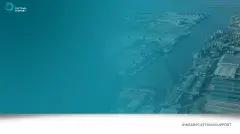What is Customs Value?
The customs value is the value that is used to determine how much customs duties you need to pay when importing goods into the European Union. To ensure global trade is fair there is a global agreement on how to determine customs value. These agreements have been laid down in the Union Customs Code. Dutch Customs has created the Handboek Douane (Customs Manual) to help you implement the Union Customs Code. One of the subjects in the Customs Manual is how Customs deals with the valuation of goods. Below you can find a short summary.
How Do You Calculate Customs Value?
There are six methods to determine the customs value. You can find them below numbered 1 through 6. Please note that this is an imperative order, with the exceptions of methods 4 and 5, which can be interchanged.
Whichever method you use, just applying the method is not enough. There are costs that can be subtracted, or have to be added to come to the customs value of a product. Companies are advised to consult with a customs consultant on this. They have the right training and experience to determine the correct customs value.
Method 1 is the standard method of calculation. It is by far the most used method to calculate customs value. If the value can’t be determined through this method, the next method in the list should be used, and so on.
Method 1. Transactional value of imported goods
The Dutch Customs Authority literally says: the customs value of imported goods is the transactional value of those goods.
The transactional value is the actual price that has been paid for the goods. This amount can be increased with the following cost if these are not included in the price paid:
- Agency fees (purchasing commission excluded)
- Packaging costs
- The value of goods or services the buyer delivered in return for the goods.
- Royalties or licence fees the buyer needs to pay
- Profit a buyer makes if the buyer resells the goods to a third party
- Transportation and insurance cost to transport the goods to the European Union
The following costs can be subtracted from the transactional value:
- Transportation cost within the European Union
- The cost of installing or montage after import
- Interest paid for financing the goods
- Reproduction rights
- Purchasing commission
- Other import duties or taxes paid at import or when selling the goods in the European Union
Method 2. Transactional value of identical goods
If the transactional value of the imported goods can’t be determined according to method 1, you may use the transactional value of identical goods. There may be small differences between the goods, but they need to look the same, have the same purpose and have to be made of the same materials. The level of quality needs to be the same, as does the reputation of the maker.
Method 3. Transactional value of similar goods
If there are no identical goods available to determine the transactional value, you can use the value of similar goods that are sold at the same time, and which are made in the same country. These goods have to be interchangeable: they have similar components and have a similar purpose. They don’t have to be exactly the same. What has to be the same is the level of quality and the reputation of the maker.
Method 4. The back-calculation method
This method is also called the retrograde method. The Customs Authority assumes the same price as paid when the goods were imported into the European Union at an earlier date. In this case, the goods have to be sold to a third independent party on import. It is not allowed to manipulate or modify the goods in the European Union before delivery.
Some costs may be subtracted from the resale value.
- Mark-ups for profit and general costs
- Transportation and insurance costs within the European Union
- Duties and taxes paid at import
If the goods are not sold immediately, you can use the resale value of identical or similar goods.
*This method can be interchanged with method 5*
Method 5. Calculated value-method
The starting point for this method is the total cost of manufacturing the goods in the country of origin. This entails the cost of materials, production and additional proceedings. To this, a mark-up is added for profit and general costs. Finally, the costs of transporting the goods to the border of the European Union is added. The cost of transporting the goods within the European Union is not included in the customs value.
This method is also known as the cost-plus method. This method can be interchanged with method 4.
Method 6. The fall-back method
With this final method, the customs value is determined based on the value of identical goods in an earlier shipment.
What If the Wrong Customs Value is Declared?
Customs duties that need to be paid are based on the customs value of the goods that are imported. That is why it is important to declare the correct customs value.
In cases where the Customs Authority finds that the customs value is too low, these taxes will be recovered. If it happens regularly administrative fines can be imposed.
What About Intercompany Deliveries?
Goods are not always sold and delivered to customers. There are also transactions within companies, where one business unit delivers goods to another business unit. When goods are sold within companies there are often large discounts, which makes it difficult to determine the customs value. Calculating import duties using these prices would mean the Customs Authority would receive less than required. This is why there is always an additional focus on intercompany deliveries. It is of the utmost importance to use a diligent process to determine the customs value.
Customs Support | Empowering Global Trade
If you need assistance or have any questions regarding customs value or any other issue with regards to importing or exporting, just contact one of our experts. They are happy to help.















